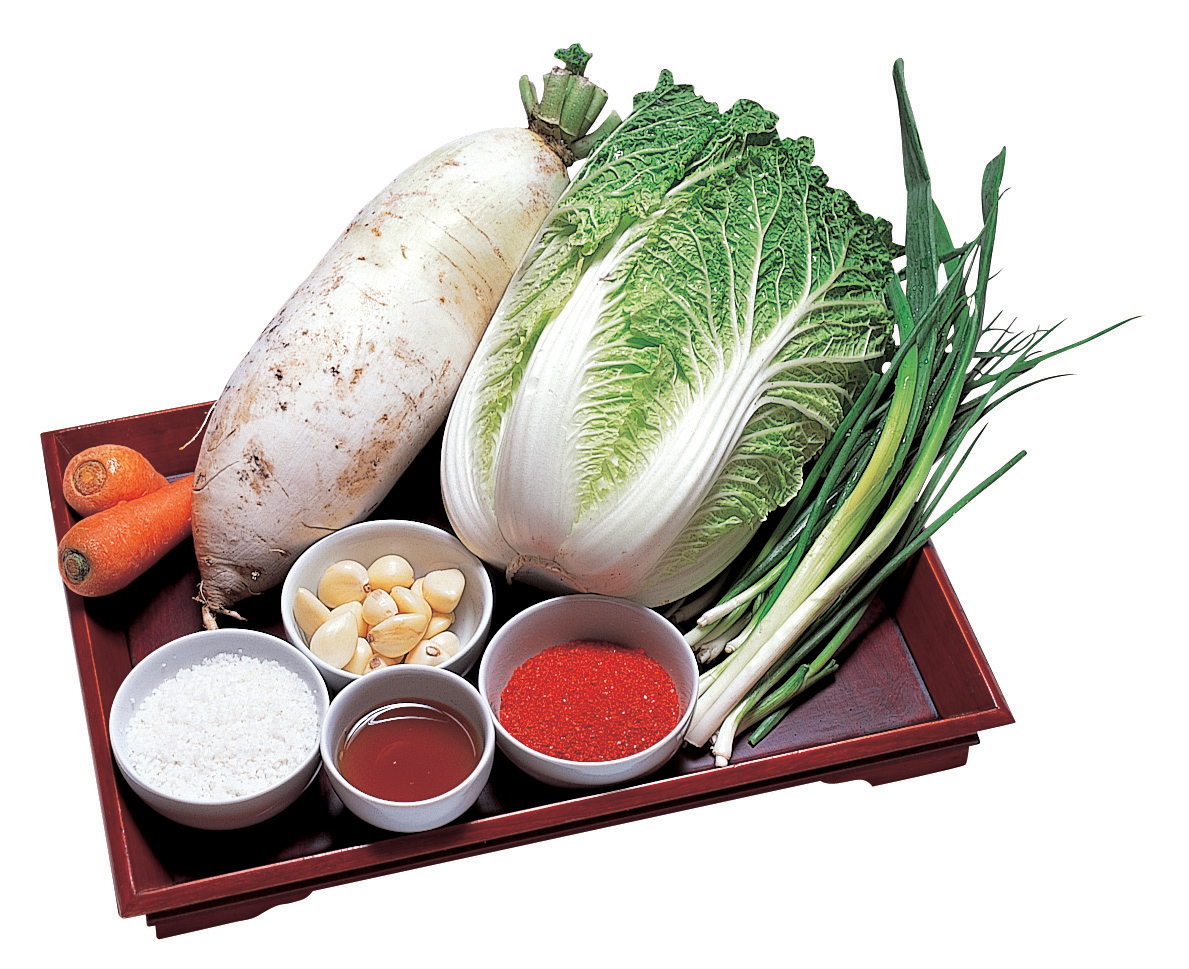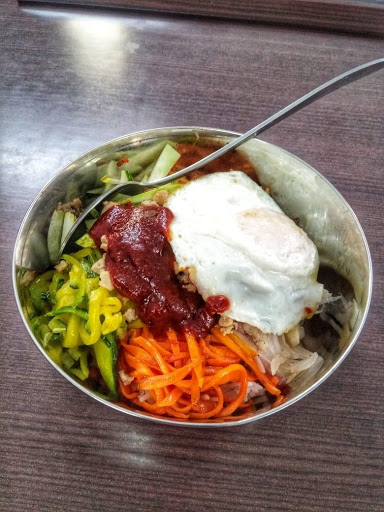|
Siŭijŏnsŏ
''Siŭijŏnsŏ'' () is a Korean cookbook that is believed to have been compiled in the late 19th century. The author is unknown but is assumed to be a lady of the yangban (nobility during the Joseon period) class in Sangju, North Gyeongsang Province. In 1919, Sim Hwanjin was appointed as the governor of Sangju and became acquainted with a local yangban family. After borrowing a cookbook from the family, Sim transcribed its contents and then gave the newly bound book to his daughter-in-law, Hong Jeong. ''Siŭijŏnsŏ'' encompasses Korean cuisine in general and categorizes foods by cooking method. The book mentions 17 different ways of making traditional alcoholic beverages, diverse dried preserved foods, and vegetables, so it is considered a valuable document for researching Korean cuisine. The book also contains the first known print mention of the term ''bibimbap''. See also *'' Domundaejak'' (): Korean cuisine critic book authored by Heo Gyun *'' Eumsik dimibang'' *Bibimbap ... [...More Info...] [...Related Items...] OR: [Wikipedia] [Google] [Baidu] |
Cookbook
A cookbook or cookery book is a kitchen reference containing recipes. Cookbooks may be general, or may specialize in a particular cuisine or category of food. Recipes in cookbooks are organized in various ways: by course (food), course (appetizer, first course, main course, dessert), by main ingredient, by cooking technique, alphabetically, by region or country, and so on. They may include illustrations of finished dish (food), dishes and preparation steps; discussions of cooking techniques, advice on kitchen equipment, ingredients, tips, and substitutions; historical and cultural notes; and so on. Cookbooks may be written by individual authors, who may be chefs, cooking teachers, or other food writers; they may be written by collectives; or they may be anonymous. They may be addressed to home cooks, to professional restaurant cooks, to institutional cooks, or to more specialized audiences. Some cookbooks are didactic, with detailed recipes addressed to beginners or people learn ... [...More Info...] [...Related Items...] OR: [Wikipedia] [Google] [Baidu] |
Heo Gyun
Heo is a family name in Korea. It is also often spelled as Huh or Hur, or less commonly as Her or Hue. In South Korea in 1985, out of a population of between roughly 40 and 45 million, there were approximately 264,000 people surnamed Heo. The name is also found in North Korea. The character used for the name ( 許) means to permit or advocate. The Heos traditionally trace their ancestry to Queen Heo Hwang-ok, the wife of King Suro of Geumgwan Gaya, one of ancient kingdoms in Korea. Her native kingdom is believed to be located in India. She bore ten sons, two of whom retained the Queen's name. The Heos are traditionally considered distant kins of the Gimhae Kim clan, who trace their ancestry to the other sons of King Suro. Clans As with most other Korean family names, there are many Heo clans, including the Gimhae clan and the Yangchon clan. Each clan consists of individual Heo families. Even within each clan, people in different families are not necessarily related to each ... [...More Info...] [...Related Items...] OR: [Wikipedia] [Google] [Baidu] |
Works By Joseon People
Works may refer to: People * Caddy Works (1896–1982), American college sports coach * John D. Works (1847–1928), California senator and judge * Samuel Works (c. 1781–1868), New York politician Albums * ''Works'' (Pink Floyd album), a Pink Floyd album from 1983 * ''Works'', a Gary Burton album from 1972 * ''Works'', a Status Quo album from 1983 * ''Works'', a John Abercrombie album from 1991 * ''Works'', a Pat Metheny album from 1994 * ''Works'', an Alan Parson Project album from 2002 * ''Works Volume 1'', a 1977 Emerson, Lake & Palmer album * ''Works Volume 2'', a 1977 Emerson, Lake & Palmer album * '' The Works'', a 1984 Queen album Other uses *Good works, a topic in Christian theology * Microsoft Works, a collection of office productivity programs created by Microsoft * IBM Works, an office suite for the IBM OS/2 operating system * Mount Works, Victoria Land, Antarctica See also * The Works (other) * Work (other) Work may refer to: * Work ( ... [...More Info...] [...Related Items...] OR: [Wikipedia] [Google] [Baidu] |
EncyKorea
The ''Encyclopedia of Korean Culture'' () is a Korean-language encyclopedia published by the Academy of Korean Studies and DongBang Media Co. It was originally published as physical books from 1991 to 2001. There is now an online version of the encyclopedia that continues to be updated. Overview On September 25, 1979, a presidential order (No. 9628; ) was issued to begin work on compiling a national encyclopedia. Work began on compiling the encyclopedia on March 18, 1980. It began publishing books in 1991. The encyclopedia's first version was completed, with 28 volumes, in 1995. It continued to be revised beginning in 1996. In 2001, the digital edition EncyKorea was published on CD-ROM and DVD. It launched an online version in 2007. A second push to update the encyclopedia concluded in 2017. The articles in the encyclopedia are aimed at readers who want to learn about Korean culture and history, and were written by over 3,800 scholars and expert contributors who are mainly assoc ... [...More Info...] [...Related Items...] OR: [Wikipedia] [Google] [Baidu] |
Empas
Empas () was a South Korean internet search engine and web portal. Name The service was launched in 1998 by Knowledge Plant Corporation (), which changed its name to Empas Corporation in 2004. The name ''Empas'' is a combination of ''e-media'' and ''compass''. It merged with Nate in 2009. History Empas was one of South Korea's most popular web search engines, and competed with Daum, Nate, and Naver. Empas was the second most popular web portal in the country from 2000 to 2001, by unique page view. Since the dominance of Naver started in 2003, however, the market share of Empas declined, and by late 2005, it had fallen into the fifth place amongst the South Korean web portals. In 2006, aiming to check its main competition Naver's rapid expansion, SK Communications (which owned South Korea's popular social networking website Cyworld) acquired Empas on 19 October 2006. With the reorganisation of SK Communications's business fields, Empas was merged with Nate.com, which was t ... [...More Info...] [...Related Items...] OR: [Wikipedia] [Google] [Baidu] |
Yahoo!
Yahoo (, styled yahoo''!'' in its logo) is an American web portal that provides the search engine Yahoo Search and related services including My Yahoo, Yahoo Mail, Yahoo News, Yahoo Finance, Yahoo Sports, y!entertainment, yahoo!life, and its advertising platform, Yahoo Native. It is operated by the namesake company Yahoo! Inc. (2017–present), Yahoo! Inc., which is 90% owned by Apollo Global Management and 10% by Verizon. Yahoo was established by Jerry Yang and David Filo in January 1994 and was one of the pioneers of the early Internet era in the 1990s. However, its use declined in the 2010s as some of its services were discontinued, and it lost market share to Facebook and Google. Etymology The word "yahoo" is a backronym for "Yet another, Yet Another Hierarchically Organized Oracle" or "Yet Another Hierarchical Officious Oracle". The term "hierarchical" described how the Yahoo database was arranged in layers of subcategories. The term "oracle" was intended to mean "sourc ... [...More Info...] [...Related Items...] OR: [Wikipedia] [Google] [Baidu] |
Kimchi
Kimchi (; ) is a traditional Korean side dish (''banchan'') consisting of salted and fermented vegetables, most often napa cabbage or Korean radish. A wide selection of seasonings are used, including '' gochugaru'' (Korean chili powder), spring onions, garlic, ginger, and '' jeotgal'' (salted seafood). Kimchi is also used in a variety of soups and stews. Kimchi is a staple food in Korean cuisine and is eaten as a side dish with almost every Korean meal. There are hundreds of different types of kimchi made with different vegetables as the main ingredients. Examples of variants include ''baechu-kimchi'', ''kkakdugi'', '' chonggak-kimchi'', and '' oi-sobagi''. Traditionally, winter kimchi, called '' gimjang'', was stored in large earthenware fermentation vessels, called '' onggi'', in the ground to prevent freezing during the winter months and to keep it cool enough to slow down the fermentation process during summer months. The process of making kimchi was called gimjan ... [...More Info...] [...Related Items...] OR: [Wikipedia] [Google] [Baidu] |
Sikhye
''Sikhye'' (, also spelled ''shikhye'' or ''shikeh''; also occasionally termed ''dansul'' or ''gamju'') is a traditional sweet Korean rice beverage, usually served as a dessert. It is a popular beverage in South Korea, often found in the beverage sections of convenience stores. It is a drink made by fermenting rice with malt to give it a sweet taste. In addition to its liquid ingredients, ''sikhye'' contains grains of cooked rice and in some cases pine nuts. It is similar to the Chinese ''jiuniang'' and Japanese ''amazake''. Preparation ''Sikhye'' is made by pouring malt water onto cooked rice. The malt water steeps in the rice at typically 62 degrees Celsius until grains of rice appear on the surface. The liquid is filtered and boiled until it gets sweet enough (no sugar is added to this drink). In South Korea and in overseas Korean grocery stores, ''sikhye'' is readily available in cans or plastic bottles. One of the largest South Korean producers of ''sikhye'' is the Vilac c ... [...More Info...] [...Related Items...] OR: [Wikipedia] [Google] [Baidu] |
Gimbap
''Gimbap'' (; ), also romanized as ''kimbap'', is a Korean cuisine, Korean dish made from Bap (rice dish), ''bap'' (cooked rice), vegetables, and optionally cooked seafood or meat, rolled in ''gim (food), gim''—dried sheets of seaweed—and served in bite-sized slices. * Some sources say it originates from Japanese norimaki, introduced during Korea under Japanese rule, Japanese colonial rule, while others argue it is a modernized version of ''bokssam'' from the Joseon era. The dish is often part of a packed meal, or ''dosirak'', to be eaten at picnics and outdoor events, and can serve as a light lunch along with ''danmuji'' (yellow pickled radish) and kimchi. It is a popular takeaway food in South Korea and abroad. Etymology ''Gim (food), Gim'' () refers to edible seaweed in the genus ''Porphyra'' and ''Pyropia''. ''bap (food), Bap'' () broadly refers to cooked rice. The compound term ''gimbap'' is a neologism; it was not a part of the Korean language until the 20th century. ... [...More Info...] [...Related Items...] OR: [Wikipedia] [Google] [Baidu] |
Bibimbap
Bibimbap * ( ; ), sometimes Romanization of Korean, romanised as bi bim bap or bi bim bop, is a Korean rice dish. The term ''bibim'' means "mixing" and ''Bap (rice dish), bap'' is cooked rice. It is served as a bowl of warm white rice topped with ''namul'' (sautéed or blanched seasoned vegetables) and ''gochujang'' (chili pepper paste). Egg and sliced meat (usually beef) are common additions, stirred together thoroughly just before eating. In South Korea, some cities such as Jeonju, Jinju, and Tongyeong are known for their versions of bibimbap. In 2017 the dish was listed at number 40 on the ''World's 50 most delicious foods'' readers' poll compiled by CNN Travel. Etymologies ''Bibimbap'' has gone by a number of names over time. Its earliest names appear in Korean hanja texts. Its first name was ' (). This name appeared in the ''Yeokjogumun'' () portion of the book ''Historical Notes of Gijae'' (), which was written by Bak Dongnyang () around 1590. In the ''Cheongdae ilgi ... [...More Info...] [...Related Items...] OR: [Wikipedia] [Google] [Baidu] |
Domundaejak
''Tomundaejak'' () is a book of food criticism written by Heo Gyun in 1611. It is included in the '' Seongseobubugo'' (; a collection of 26 books and 12 volumes). This book was written during Heo Gyun's exile. He was exiled to Hamyel (now Iksan), a seaside district in North Jeolla Province. While eating the coarse food there, he started to describe the delicious food that he ate before. ''Domun'' () means the door of the butcher's, and ''daejak'' () means chewing something loudly. So the title ''Tomundaejak'' means licking one's lips by the butcher's door, thinking of the meat that one cannot now eat. This book refers to 11 sorts of tteok, 30 types of fruit, 5 kinds of meat, 40 varieties of seafood, 25 sorts of vegetables and 5 other foods, for a total of 117 foods. It names those foods' ingredients' groups, names, specific localities of production, origins, bulk dates, production seasons, processing methods, shape, taste and so on. Composition ''Tomundaejak'' describes and comm ... [...More Info...] [...Related Items...] OR: [Wikipedia] [Google] [Baidu] |






